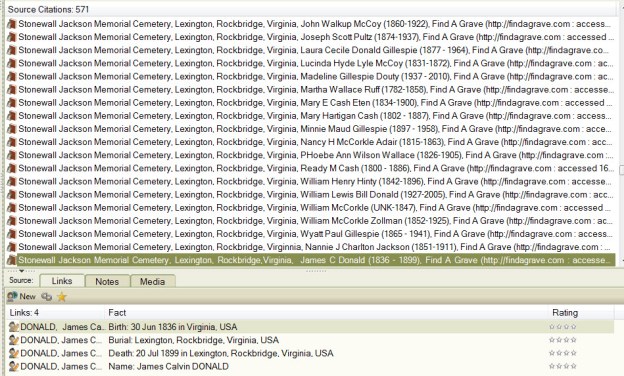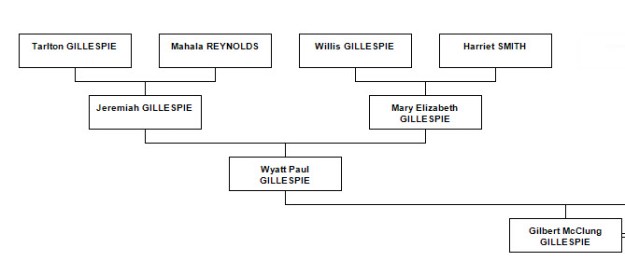To abide by the Genealogical Proof Standard you must do an exhaustive search. 1
We know that includes vital records, deeds, probate, tombstones and a wide variety of original and derivative sources. But in the age of the internet, what else does it include? How many sites should we look at? Random Google searches are not the answer I do believe, but are sites that we know to hold sometimes questionable research part of a exhaustive search?
A Southern Sleuth mentions in Treasured Find, how a SLIG instructor mentioned that “one of the instructors reminded our class of the value of checking online trees to determine what research may have been done by other individuals.” She continues to discuss how she has often rejected online trees because there is quite a bit of bad research or just complete fabrication in those trees, but she decided to add them to her list.

A capture of my paternal grandfather’s online tree.
I have also stopped looking at online trees because sifting through them looking for nuggets is much like searching for the proverbial needle in the haystack.
I also received a comment on this blog from a reader who didn’t have a lot of faith in Find A Grave because there is some bad information on the site. And indeed there is. There are plenty of memorials without any kind of documentation, even tombstones, and extra information is added without supporting documentation. This is a function of the site, it is not set up for supporting documentation other than photos.
This memorial of Mary Hartigan Cash, my ggg grandmother’s memorial on Find A Grave has information supported by the picture of the tombstone, which states her birth year, death date and that she was the wife of Ready Cash. 2

Find A Grave Memorial for Mary Hartigan Cash
It also states that she and Ready had three children, Franklin, Mary E and Virginia, and there is no supporting documentation. This doesn’t mean the information is wrong, it is actually correct, although my gg grandmother, Martha Jane Cash is left out of the list.
So what is a good source? What is a bad source?
SOURCES provide INFORMATION from which we select EVIDENCE for ANALYSIS. A sound CONCLUSION may then be considered “PROOF.”
— Elizabeth Shown Mills 3
When the information is selected from the source, it’s validity depends on the informant and what their knowledge is of the event. The source itself is not good or bad. It is just a source. The question being asked determines if the information is evidence and analysis determines if the information is part of the proof. Conflicting evidence must be considered and explained.
Whoever supplied the information for Mary’s tombstone, not the Find A Grave memorial, probably had good knowledge of her death date, 29 Aug 1887. In fact, he or she may have been a primary informant if present at her death. But given that she was 87 years old when she died, it is doubtful that they were a witness to her birth, so that person was at best a secondary information.
As for the children of Ready and Mary, the person stating the information, most likely did not have direct knowledge of the children and their parents. However, the supporting documentation may be there, but we don’t know because it is not listed.
So what does all this mean? The Find A Grave memorial may or may not be good evidence, it depends on the question. There are four possible questions that pop to mind that be answered by this particular source:
- When did Mary Hartigan Cash die?
- Who was Mary’s husband?
- When was Mary born?
- Who were the children of Ready and Mary?
The quality of the evidence from the Find A Grave source depends on which question you are trying to answer. To do good quality genealogy you must do a exhaustive search. You may choose to reject the evidence because of who the informant is, other conflicting information, or lack of documentation. But you must examine all the sources available to you. And online trees and Find A Grave and other online sources hold both good and bad information that must be included in an exhaustive search.






